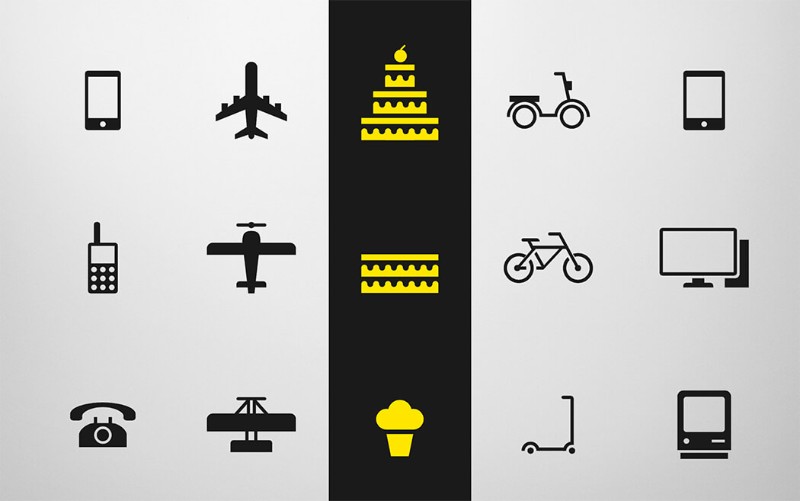How to test your minimum viable product
A minimum viable product remains the best way to test a hypothesis, which justifies the efforts of building it, which is not an easy process. But why make an MVP? Building an MVP is not only about checking if your product is technically feasible. It’s about more than that.
You create a minimal viable product to learn if you should be developing your product at all, i.e., if your product is indeed a solution to a problem and if people are willing to pay for your product to get that problem solved because, sometimes, the problem is not worth addressing.
Developers build and test a MVPs because they want to make sure they are not going to be wasting precious time and money creating a product that targets a market that is not viable or a product that is not technically feasible. That’s the whole point of building an MVP.
A minimum viable product can be as simple as AdWords tests or as complex as a prototype. First, you must establish what you want to test with your MVP and then you must identify and select a testing technique that will return a reliable and usable date from real-life users.
Here are some of the techniques you can use to test your MVP minimum viable product:
1. Wizard of Oz

Wizard of Oz is an MVP testing technique that sort of tricks the users into thinking they are using the finished product. However, behind-the-scenes, you are handling all the work manually. Although this technique involves some trickery, it is a useful MVP testing solution.
By using the Wizard of Oz technique, you learn if people want your product at all before investing in its development, how much they want it, what are the downsides of your product, and what are the qualities of your product and how you could improve them.
2. Landing Pages
A landing page is a virtual door to a business, i.e., a user’s first contact with who you are and what you do. Therefore, use a landing page to tell people who you are, what your product is about, and what problem it solves, and ask them to sign up for your product.
Before starting to promote it and potentially lose conversions because of various problems, make sure you’re not doing the usual mistakes that would hurt your CRO.
3. Ad Campaigns

Ad campaigns via platforms such as Facebook or Google are an excellent market validation technique. After drilling down demographics to reach a specific target customer, you can run a low-fidelity test to learn which product features are appealing to your target market.
Ad campaigns also let us see statistics on conversations and click-through rates.
4. Digital Prototypes
What is an MVP? Define MVP! MVP stands for minimum viable product and is often associated with a prototype of the true product. A digital prototype of the true product can be a mock-up, a wireframe, or a demo application with dummy text and data. It depends on what you want to build.
As a minimum viable product, a digital prototype can prove the viability of the end product. A prototype is not difficult to build, and it doesn’t cost a fortune. You can use prototyping or wireframing tools to turn a concept into a functional MVP.
5. Paper Prototypes

Paper prototypes are actual representations of your finished product and are accessible to any team member, including salespeople, product managers, end users and graphic designers. Paper prototypes allow you to demonstrate the UX of your product efficiently.
6. Explainer Videos
People love videos because they only have to watch; they don’t need to read or do anything else, just watch. There is no better way to prove your product’s user experience than an explainer video and, perhaps, the most compelling example in this respect is Dropbox.
Dropbox used an explainer video as its minimum viable product. An overnight jump from 5,000 to 75,000 signups were recorded after Dropbox released a 3-minute explainer video on its intended features. Without a true product, Dropbox had already validated its market.
And all of that without any money invested in development or infrastructure. It’s not easy to reach your target audience and offer them a solution to a problem that your audience doesn’t even recognize as a problem. A concise tagline couldn’t have done it for Dropbox.
A video that showed how Dropbox solved problems made Dropbox what it is today. As potential clients saw clearly how Dropbox would be able to help them, they admitted to their problems and showed their willingness to pay to solve those problems.
7. Fundraising
There are crowdfunding websites that present a set of minimum viable products. Visitors choose to support one of these products by making a donation. Therefore, the donated amounts become a means of estimating the viability of the intended market of a product.
Fundraising reveals early adopters who will not only spread the word about your product but will also provide feedback throughout the product’s development cycle because early adopters have a share in the product’s success given their initial donation.
8. Concierge MVPs

With a concierge Minimum Viable Product, you inform the users that they are using an MVP and not a true product. They know that you are doing the manual work, but they believe that the service or product they are testing is for selected customers only.
The concierge test is a prettily dressed Wizard of Oz and a valuable MVP testing technique. One of the success stories belongs to Rent the Runway, which, before investing in their online dress rental business, provided their service to college students who were allowed to try on any dress before they rented it, which validated their business concept.
Be Ready to Learn
Don’t be shocked if you’ve created a landing page for your MVP and asked 50 friends to come and sign up and none of them did. Don’t be shocked if 3 out of 1,000 moms of toddlers said yes to your invitation to join mothersoftoddlers.com.
Don’t be shocked and don’t be deterred in your way. You need to start learning and see what you can change about your product. Observe the customer at work. Understand your customers until the customer treats you like they would treat another customer.
After you test your MVP, you need to present your potential clients with the true product, and you will not present them with the true product to have them pay for it, but you will present them with the true product to have them give you their honest feedback.
Product development, in fact, is one of the most vital stages of setting up your business, and this cannot be taken lightly. In case you want to delegate this process to the experts, TMS is what you need.
Summary
Creating an MVP takes time and money, and it can be regarded as a waste of resources. Yes, it costs time and money, but it costs less time and money than developing a true product. What if you develop a product or a service that no one wants to pay to get it?
To minimize the risk of launching a product that doesn’t have a market, you need to build a minimum viable product, which will demonstrate if it’s worth spending resources in developing your true product. Don’t limit yourself to one testing technique!
Use several testing techniques. Getting validated from different perspectives is always a plus. Forget about the misconception that customers will come once you’ve built the product. It doesn’t work like that. Make sure that customers will come by testing your product first in the form of an MVP.
